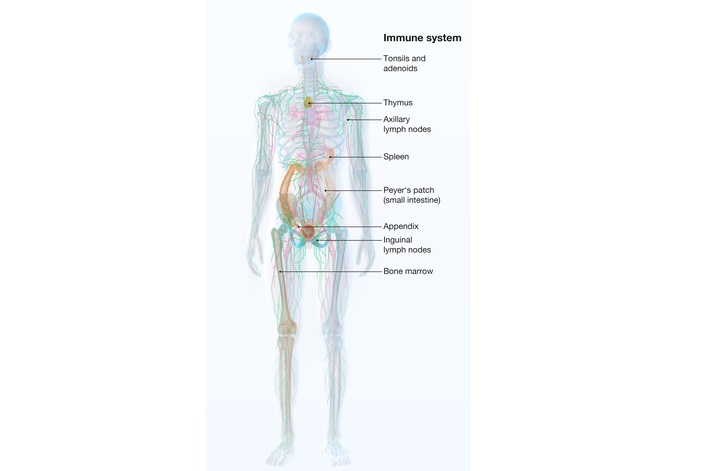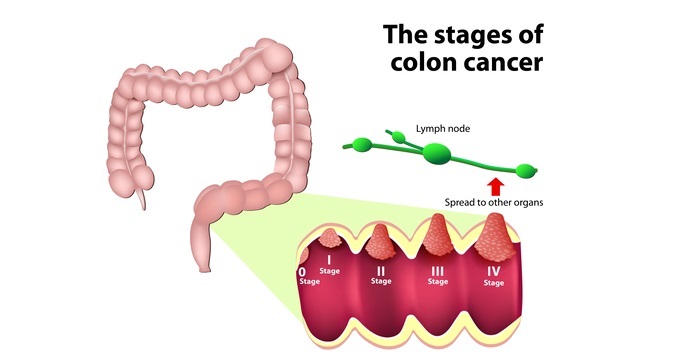
 Data Structure
Data Structure Networking
Networking RDBMS
RDBMS Operating System
Operating System Java
Java MS Excel
MS Excel iOS
iOS HTML
HTML CSS
CSS Android
Android Python
Python C Programming
C Programming C++
C++ C#
C# MongoDB
MongoDB MySQL
MySQL Javascript
Javascript PHP
PHP
- Selected Reading
- UPSC IAS Exams Notes
- Developer's Best Practices
- Questions and Answers
- Effective Resume Writing
- HR Interview Questions
- Computer Glossary
- Who is Who
Lymph Node and Its Significance in Cancer Staging
Lymph Nodes in Relation to an Immune System
Lymph nodes are the secondary lymphoid organs of the lymphatic system. Usually the term lymphoid belongs to immune system-related functions.
The lymphatic system which is an extension of the circulatory system usually carries the lymph back to the bloodstream. This lymphatic system does not have any pump but the motion of the lymph mainly occurs due to muscular movements. As the lymphatic system dumps back the lymph into the circulatory system it is said to be a backup drainage system to prevent excess fluid retention in the tissues which can lead to edema.

Lymph nodes are the bean-shaped structures present all over the body which is involved in filtering the lymph carried by the lymphatic vasculature from the interstitial spaces of tissues to the bloodstream of the circulatory system.
Lymph is the clear liquid that usually carries WBC, proteins, immune cells, or any foreign pathogens from the infected tissues towards the lymph nodes. So in lymph nodes, the leukocytes and macrophages present act on the pathogens by engulfing them. If at all the pathogens cannot be eliminated these lymph nodes activate the immune system to act on these pathogens.
Examples: Lymph nodes present in armpits prevent the pathogens from invading the whole arm, present in the back of the throat as tonsils, sides of the neck, throughout the abdominal area, groin, etc. So there are hundreds of lymph nodes in the body and the largest lymph node is the spleen located on the left side underneath the ribcage.

Structure of the Lymph Node
Lymph nodes contain the lymphocytes which are the immune cells upon whose activation, exerts the adaptive immune responses when a foreign particle enters the lymph node through the lymph. These lymphocytes can also come outside the lymphatic system towards the tissues.
Lymphocytes are usually 3 primary types which are NK cells, T lymphocytes, and B lymphocytes.
Natural Killer Cells
NK is like part of the Special Forces specialized in killing virally infected cells. These attack the virus invading the cells, tumor cells, and cancer cells. Hence it is why sometimes cancer results in the swelling of the glands.
Hence we should realize that the immune system is not just for fighting infections but it has also an important role in preventing cancer from invading the body. Hence when chemotherapy is done in cancer patients, it destroys the immune system and then they end up with secondary infections and even the re-occurrence of cancers.
T - Cells
These cells have many specialized functions to kill very specific microbes and these are activated by another immune system called the innate immune system which is a system that we are born with and is a first line of defense. There is certain tolerance of our own tissue that an immune system must tolerate and not attack which is by determining self from the non-self-microbes or particles. T cells mature in the thymus, a little organ present at the top of the heart and only 30% of these cells survive the training.
B - Cells
These stand for bone marrow. These cells are involved in producing the antibodies which can recognize the specific antigens or microbes and attack. These antibodies are unlimited in number.
Significance of Lymph Nodes in Cancers
Usually, we talk about the lymph nodes in cancers as status which refers to the positive or negative. This means how many lymph nodes are positive for cancers and are removed when cancer is seen under the microscope. Lymph node number can have a link with the immune system of the body. More number refers to a healthy immune system.
Lymph nodes are usually removed when we feel cancer or if it is enlarged. Lymph nodes are handled the same way as breast tissue. If one or two cancer cells are observed in the lymph nodes, these are called isolated tumor cells and are not associated with the prognosis. Cancer cells which come by displacement through the lymph are trapped under a capsule in the lymph nodes.
The largest focus of the cancers is defined in the lymph nodes. The pathology report will describe how many nodes were positive for cancers.
Cancer Staging
Staging is a way of describing the size of cancer and how far it has grown. During the diagnosis, doctors usually check how big the cancer is and whether it has spread to other tissues (invasion). Also checks if it has spread to other body parts (metastasis). The staging of cancers is very important for the type of treatment.
Sometimes doctors are not sure if cancer has spread to another part of the body or not. Then they look for lymph nodes near that cancer. If there are cancerous cells in that particular lymph node, it is a sign that cancer has begun to spread. Doctors call this having positive lymph nodes. The cells broke away from the original cancer and get trapped in the lymph nodes.

If cancer cells are found in lymph nodes doctors give adjuvant treatment which is given along with the primary treatment for the initial tumor.
There are 2 main staging systems for cancer, they are -
TNM System (Tumor node metastasis)
This system uses numbers to describe cancer. T describes the size of the initial tumor and how far it is spread (1 - small, 2, 3, and 4 - large). N refers to whether cancer has spread to lymph nodes ranging from 0-no lymph nodes containing cancer cells to 3-lot of lymph nodes containing cancer cells. M refers to whether cancer has spread to a different part. It can either be 0 (cancer has not spread) or 1 (cancer has spread).
Small cancer that has spread to lymph nodes and not anywhere else in the body may be T2N1M0.
More advanced cancer that has spread may be T4N3M1.
Number Staging System
Usually uses TNM system to divide cancers into stages. Most of them have 4 stages of cancer which are numbered from 1-4 or in roman numbers.
Stage 1 ? cancer is small and within the organ
Stage 2 ? Tumor larger than stage 1 and cancer not spread. Depending on a particular type of cancer, sometimes stage 2 means cancer has spread to lymph nodes near the tumor.
Stage 3 ? Larger tumor and spread to other tissues. Here there are cancer cells in lymph nodes.
Stage 4 ? Cancer spread to another organ which is called metastatic cancer.
Sometimes letters a, b, and c are used to further divide into categories. Examples: M1a lung cancer (spread to other lungs), M1b (spread to other body parts).
pT4 - P here stands for the pathological stage, and cT2 C here stands for the clinical stage.

Conclusion
Lymph nodes are the secondary lymphoid organs with anatomical features that support initiation of the adaptive immune host defenses. A lymph node is composed of the capsule, cortex and medulla. T cells are clustered in the T cell zones in the peri-cortex while B cells resides primarily in the follicles of the outer cortex. The medulla contains sinuses and medullary cords.
T and B cells enters the lymph node through the blood supply and migrate to their respective compartments through the specialized blood vessels called high endothelial venules. The movement of the T cells is guided by reticular network which is a supportive structure throughout the lymph node. Lymph enters the lymph node to the sub-capsular sinus through the afferent lymphatic vessel.
It carries antigen and the dendritic cells and most of the lymph drains the medullary sinuses and leaves the lymph node via the efferent lymphatic vessel. Small amount of lymph profuse through para-cortex and absorbed by blood vessels.

